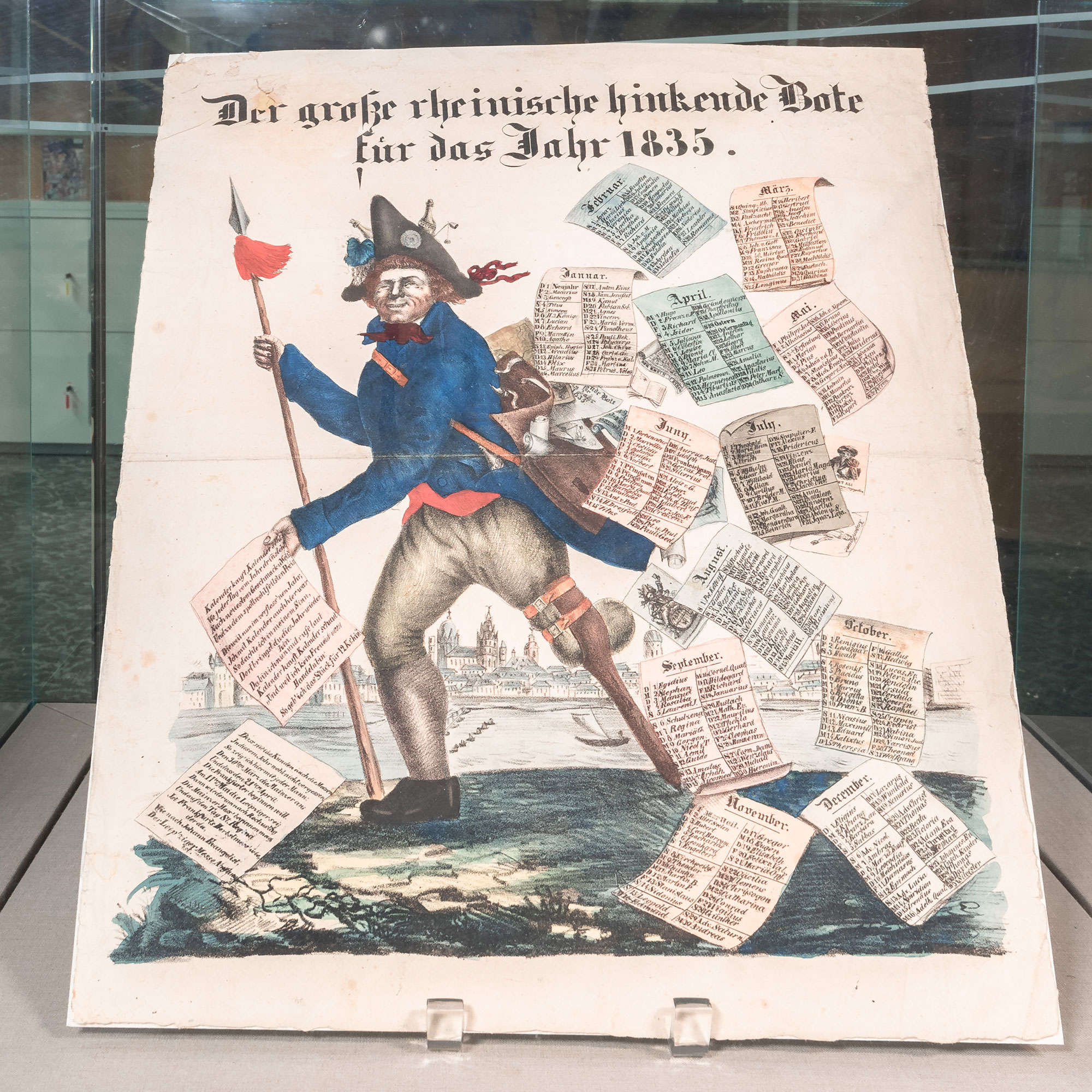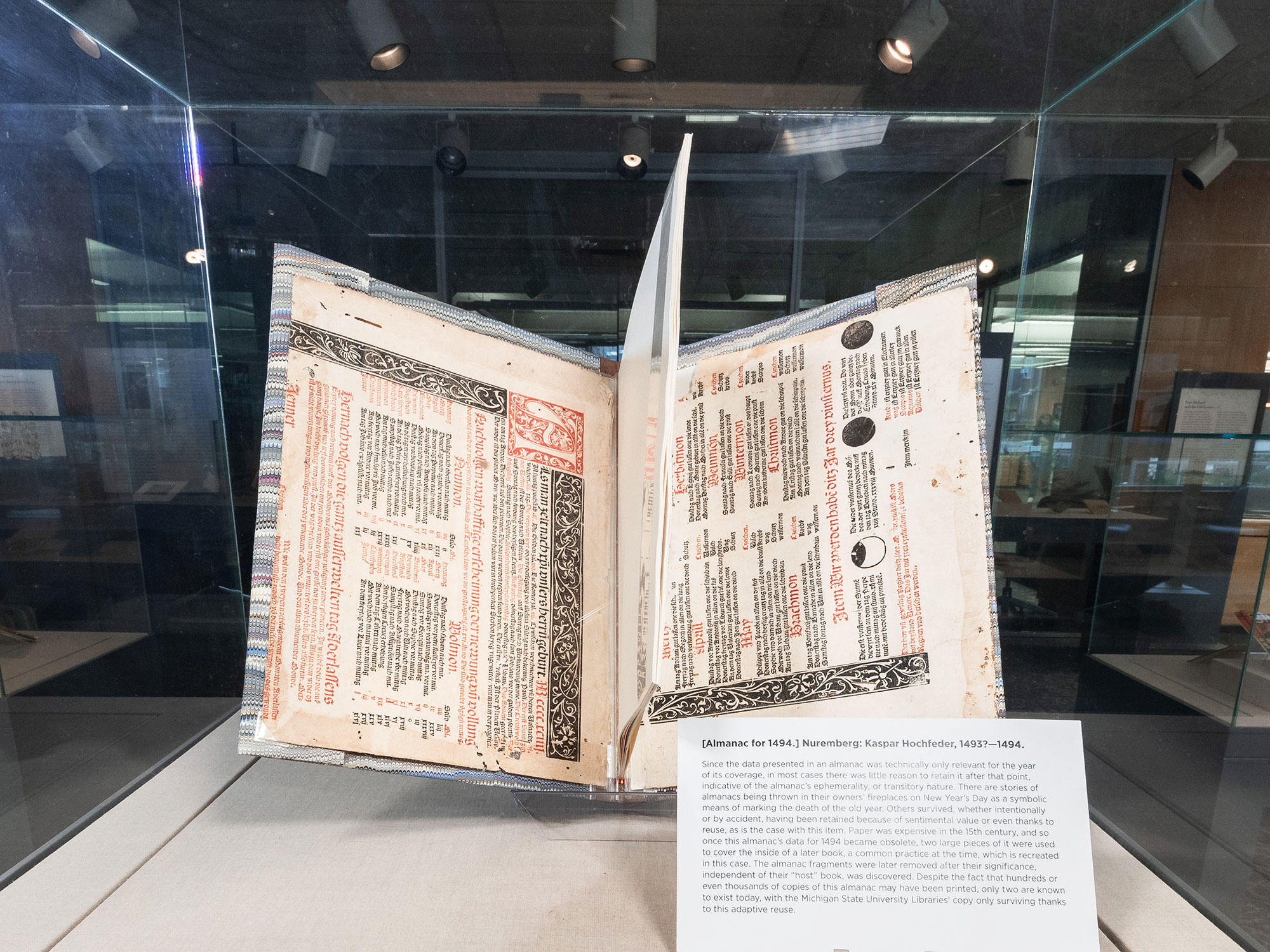A new exhibit exploring the almanacs and calendars of Michigan State University Libraries’ Special Collections is now on display at the MSU Libraries Main Gallery through the end of April.

“Marking Time: Almanacs and Calendars from the Stephen O. Murray and Keelung Hong Special Collections” features more than 65 historical and rare publications ranging from the 15th to the 20th century. Items on display include:
- A fragment of the earliest known almanac printed in Latin, one of two surviving copies, most likely printed in 1480. It was printed in Passau, Germany, by Benediktus Mayr and covers the year 1481.
- A broadside advertisement for the 1835 issue of the “Grosse rheinische hinkende Bote,” or “Great Rhenish Limping Messenger,” featuring its title character as he travels from town to town selling his almanac.
- Several editions of “Poor Richard’s Almanack,” which was written, printed and published pseudonymously by Benjamin Franklin from 1732 to 1758, along with several editions of the more fact-oriented annual “The Old Farmer’s Almanac,” founded by Robert Bailey Thomas in 1792.
- International almanacs from Turkey, Russia, Indonesia, Spain, Italy, the Netherlands and Portugal that show how information contained in almanacs could differ according to communal need.
- Miniature or pocket almanacs, which began appearing in the 18th century and usually included the standard calendar, as well as lists of monarchs and government officials, currency conversion tables and other valuable information.
Almanacs are considered by some scholars to have their beginnings rooted over 3,000 years ago in the Near East and are some of the most universal types of chronological text. The word “almanac” (also spelled “almanack” or “almanach”) first appeared in English in the late 14th century, referring to a collection of permanent tables of astronomical data, though the term appeared in Anglo-Latin usage during the previous century.

In addition to the calendar for the year, almanacs include current information like weather forecasts, astronomical predictions, tide tables and information regarding religious festivals. For centuries, almanacs were the second most popular genre of text in Europe and North America after religious works like the Bible and prayer books.
“Almanacs are tremendously important sources for historical research, not only for the information they contain but also for what they can tell us about their owners and readers,” said Tad Boehmer, curator of rare books and special collections cataloger at MSU Libraries. “We have almanacs in the collection containing marginal notes documenting their owners’ travels and finances, along with major life events (the births, marriages and deaths of family members) and references to the weather. In effect, the almanacs act as snapshots of daily life in an age-long past.”

According to Boehmer, the seed of the Murray and Hong’s almanac collection began with the development of the library’s popular culture collection in the late 1960s, which was guided by pop culture studies pioneer Professor Russel Nye during his tenure at MSU. Another significant leap forward came in 2016 with the acquisition of the William D. “Bill” and Helen M. Chase Collection. Bill Chase was renowned for “Chase’s Calendar of Events,” which he began publishing in 1957 with his brother, Harrison Chase, out of a basement under the Chases’ Apple Tree Press imprint. Now owned by Rowman and Littlefield, the calendar has been issued every year since and includes holidays, special events, and notable birthdays and anniversaries, as well as unusual traditions like National Nothing Day, which “provide[s] Americans with one National Day when they can just sit without celebrating, observing or honoring anything.”
Catherine Ryan, daughter of Bill and Helen Chase, said that her father would be “most pleased” to have his calendars on display and that the MSU Libraries is “keeping his collection alive.”